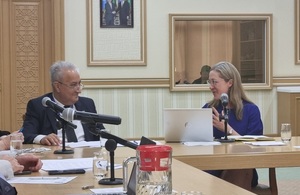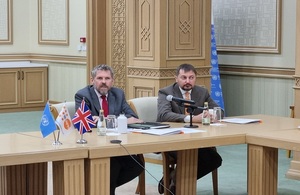HM Law Officers sworn in
News story
The Attorney General and Solicitor General were sworn in during a joint ceremony at the Royal Courts of Justice today.

The Rt Hon Michael Ellis KC MP was sworn in as His Majesty’s Attorney General for England and Wales in a joint ceremony at the Royal Courts of Justice today.
His Majesty’s Solicitor General Michael Tomlinson MP was also sworn in at the ceremony. Speaking after the ceremony, His Majesty’s Attorney General, the Rt Hon Michael Ellis KC MP said:
I am honoured to be sworn in after returning as His Majesty’s Attorney General for England and Wales. As the Government’s chief legal adviser, my focus will be upholding the rule of law and strengthening our justice system.
I also warmly welcome Michael Tomlinson MP to his role as His Majesty’s Solicitor General. Michael brings a wealth of experience and wisdom to the role.
Commenting on his new appointment, HM Solicitor General Michael Tomlinson MP said:
It is a privilege to be sworn in as His Majesty’s Solicitor General for England and Wales.
There are important responsibilities that come with this unique role which has been part of our constitution for centuries, and I look forward to working with His Majesty’s Attorney General to play my part in upholding the rule of law and carrying out the public interest functions of the Attorney General’s Office.
HM Attorney General is the Government’s chief legal advisor and also attends Cabinet. As well as providing advice to government, HM Law Officers (the Attorney General and Solicitor General) oversee the Law Officers’ Departments which include the Crown Prosecution Service, Serious Fraud Office, Government Legal Department and HM Crown Prosecution Service Inspectorate.
HM Law Officers carry out a number of functions in the public interest, such as considering unduly lenient sentences and taking action when there has been a contempt of court. These functions are carried out independently of their role as government ministers.
The Rt Hon Michael Ellis KC MP was first appointed Attorney General on 2 March 2021 and held office until 10 September 2021. He was reappointed on 6 September 2022.
Michael Tomlinson MP was appointed as Solicitor General for England and Wales on 7 September 2022.
Published 29 September 2022



